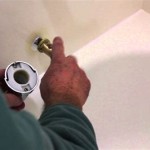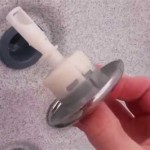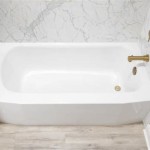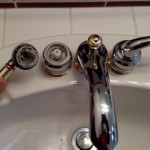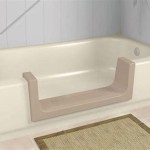What Is The Best Non-Slip Bathtub Mat?
Selecting the best non-slip bathtub mat is a crucial decision for ensuring safety and preventing accidents in the bathroom. Bathtubs, by their very nature, become slippery when wet, significantly increasing the risk of falls, especially for children, the elderly, and individuals with mobility issues. The market offers a wide array of bathtub mats, each with varying features, materials, and effectiveness in providing grip. This article will delve into the key factors to consider when choosing a non-slip bathtub mat, analyzing the different types available, and exploring the aspects that contribute to optimal safety and comfort.
The primary function of a non-slip bathtub mat is to enhance traction on the slippery surface of the bathtub floor. This is achieved through a combination of the mat's material, its surface texture, and the adhesion mechanism that keeps it securely in place. The efficacy of a bathtub mat is directly related to its ability to prevent slips and falls, thereby reducing the likelihood of injuries. Considering the potential consequences of bathroom accidents, investing in a high-quality non-slip mat is a prudent safety measure for any household.
Numerous factors contribute to the overall effectiveness and suitability of a non-slip bathtub mat. These factors encompass the material used in its construction, the design and texture of the surface, the type and number of suction cups (if applicable), the ease of cleaning and maintenance, and the overall durability and longevity of the product. Furthermore, considerations such as the size and shape of the mat, its aesthetic appeal, and any specific features like antimicrobial properties can also influence the selection process.
Key Considerations When Choosing a Non-Slip Bathtub Mat
Choosing a non-slip bathtub mat requires careful evaluation of several key factors. These factors will determine the mat’s effectiveness, durability, and overall suitability for the intended user and environment.
Material: The material of a bathtub mat significantly influences its grip, durability, and ease of maintenance. Common materials include rubber, PVC (polyvinyl chloride), and TPE (thermoplastic elastomer). Rubber mats often provide excellent grip and are naturally resistant to water damage. However, they can sometimes have a noticeable odor. PVC mats are generally more affordable and come in a wider variety of colors and designs. However, some PVC mats may contain phthalates, which are chemicals of concern. TPE mats offer a good balance of grip, durability, and environmental friendliness, as they are often recyclable and free of harmful chemicals. The ideal material should be non-toxic, durable, and provide a secure grip even when wet. Consider opting for materials labeled as phthalate-free or BPA-free for added safety.
Suction Cups: Suction cups are the most common mechanism for securing a bathtub mat to the tub floor. The quantity, size, and quality of suction cups directly impact how well the mat stays in place. A mat with a large number of evenly distributed suction cups typically provides better adhesion than one with fewer or poorly placed cups. Before each use, it is crucial to ensure that each suction cup is firmly attached to a clean and smooth bathtub surface. Avoid using mats with damaged or missing suction cups, as they can compromise safety. In addition to the number of suction cups, also consider the suction power, some are stronger than others. This can be tested before use by pressing down on the mat and attempting to slide it.
Surface Texture: The surface texture of a bathtub mat is another crucial element in preventing slips. Textured surfaces, whether through raised patterns, ridges, or bumps, create friction and enhance grip, reducing the likelihood of slipping. A smooth, glossy surface offers minimal resistance and is not suitable for a non-slip mat. The ideal surface texture should be effective in providing grip without being abrasive or uncomfortable against the skin. Some mats have a combination of textures to enhance both grip and comfort. In addition to texture, consider the size of the surface area. Larger patterns with greater spacing can still be slippery, so look for closer knit together patterns for a more secure grip.
Types of Non-Slip Bathtub Mats
The market offers a variety of non-slip bathtub mats, each with its unique properties and advantages. Understanding the different types available can help in making a more informed decision.
Rubber Mats: Rubber mats are a popular choice due to their excellent grip, durability, and resistance to water damage. They are often made from natural or synthetic rubber and can withstand frequent use. Rubber mats are generally heavier than other types, which contributes to their stability and resistance to movement. However, some rubber mats may have a strong odor, especially when new. This odor typically dissipates over time. Rubber mats are an excellent choice for heavy usage areas.
PVC Mats: PVC mats are a cost-effective option that comes in a wide range of colors, designs, and sizes. They are lightweight and easy to clean. However, some PVC mats may contain phthalates, which are chemicals of concern. When selecting a PVC mat, look for products labeled as phthalate-free. PVC mats are generally less durable than rubber mats and may wear out more quickly with frequent use. They are a good option for those on a budget or who desire a wider variety of design choices.
TPE Mats: TPE (thermoplastic elastomer) mats offer a good balance of grip, durability, and environmental friendliness. TPE is a recyclable material that is often free of harmful chemicals like phthalates and BPA. TPE mats are generally softer and more comfortable than rubber or PVC mats. They are a good choice for those seeking an eco-friendly and comfortable option. TPE mats are becoming increasingly popular due to their combination of performance and sustainability.
Maintaining Your Non-Slip Bathtub Mat for Longevity and Safety
Proper maintenance is essential for ensuring the longevity and continued effectiveness of a non-slip bathtub mat. Regular cleaning and care can prevent the buildup of mold, mildew, and soap scum, which can compromise the mat's grip and create unsanitary conditions.
Regular Cleaning: Clean the bathtub mat regularly with soap and water to remove soap scum, body oils, and other debris. Use a mild detergent and a soft brush or sponge to scrub the surface of the mat. Rinse thoroughly with clean water and allow the mat to air dry completely before storing or replacing it in the bathtub. Failing to clean the mat regularly promotes the growth of bacteria and reduces the effectiveness of the suction cups. Consider using a disinfectant occasionally, especially if there are frequent users of the bathtub. A diluted bleach solution can be used, but ensure to rinse thoroughly and allow to air dry to prevent damage to the mat.
Preventing Mold and Mildew: Mold and mildew thrive in damp environments, making bathtub mats susceptible to their growth. To prevent mold and mildew, ensure that the mat is completely dry after each use. Hang the mat over the side of the bathtub or shower door to allow air to circulate. Alternatively, place the mat in a well-ventilated area to dry. Regularly inspect the mat for signs of mold or mildew. If mold or mildew is present, clean the mat with a solution of bleach and water or a commercial mold and mildew remover. Ensure to rinse thoroughly and dry completely. Some mats come with antimicrobial properties, look for those with that capability.
Proper Storage: When not in use, store the bathtub mat in a dry, well-ventilated area. Avoid storing the mat in a damp or enclosed space, as this can promote mold and mildew growth. Roll or hang the mat to prevent it from creasing or folding, which can damage the suction cups. Proper storage prolongs the life of the mat and ensures that it remains effective in preventing slips.
By carefully considering the material, suction cups, surface texture, and type of mat, individuals can make informed choices that enhance bathroom safety. Prioritizing regular cleaning and proper maintenance practices further ensures the longevity and effectiveness of the chosen non-slip bathtub mat, contributing to a safer and more comfortable bathing experience for all users.
What Is The Best Non Slip Shower Mat Quora
:max_bytes(150000):strip_icc()/vwh-best-bath-mats-tout-5cfa9a0dad2e48278f66896ef7f893b6.jpg?strip=all)
The 7 Best Non Slip Shower Mats Of 2024

Stop Slipping Why This Is A Top Bath Mat For Seniors Safety And Comfort

Ucomely Non Slip Bathtub Mat Soft Textured Shower Floor For Wet Areas Quick Drying Grey

Sixhome Shower Mat Non Slip Bath For Tub 14 X27 Mats Bathtub Machine Washable With Suction Cups And Drain Holes Woven

Sixhome Non Slip Shower Mat For Tub Bubble Vinyl Bath Suction Cups And Drain Holes Green

Semfri Pvc Loofah Bath Mat Quick Drying Shower Stall Bathtub Non Slip 16x24 Inch Soft Textured Tub For Wet Area Gray Com

5 Best Shower Mat Options To Prevent Slips And Falls Bob Vila

10 Best Baby Bath Mats Of 2024

Buy Anti Slip Shower Mats Non At Best In Kookee
Related Posts

